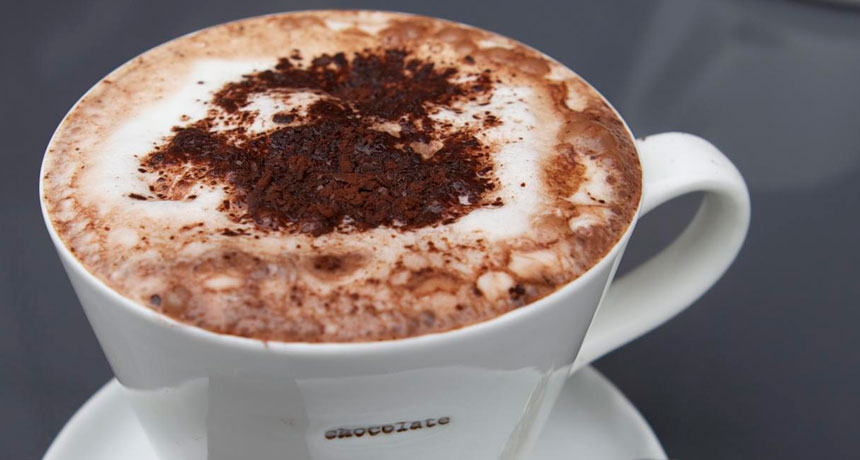Scientists Say: Base
These chemicals contain the negatively charged groups of atoms that give cocoa and many other things their bitter taste

Basic chemicals lend coffee and chocolate their bitter flavors.
pathlost/Flickr/ (CC BY-NC 2.0)
Come explore with us!
These chemicals contain the negatively charged groups of atoms that give cocoa and many other things their bitter taste

Basic chemicals lend coffee and chocolate their bitter flavors.
pathlost/Flickr/ (CC BY-NC 2.0)
Any chemical that contains a hydroxyl group, which is an oxygen atom bound to a hydrogen atom. Hydroxyl groups have a small negative electric charge. That charge makes a base react with an acid — some chemical containing positively charged hydrogen ions. Basic compounds have a bitter flavor. We can taste them in foods such as coffee and cocoa. When measured on a pH scale — a zero to 14 ranking of how acidic or basic chemicals are — bases score higher than 7.0. Basic chemicals are also called alkaline compounds.
Water that is salty and basic can hold more carbon than pure water, making salty water pools a storage site for carbon dioxide.
Follow Eureka! Lab on Twitter
acid A chemical that increases the level of hydrogen ions in a solution.
acidic An adjective for materials that contain acid. These materials often are capable of eating away at some minerals such as carbonate, or preventing their formation in the first place.
alkaline An adjective that describes a chemical that produces hydroxide ions (OH-) in a solution. These solutions are also referred to as basic — as in the opposite of acidic — and have a pH above 7.
base (in chemistry) A chemical that produces hydroxide ions (OH-) in a solution. Basic solutions are also referred to as alkaline. (in genetics) A shortened version of the term nucleobase. These bases are building blocks of DNA and RNA molecules.
carbon dioxide (or CO2) A colorless, odorless gas produced by all animals when the oxygen they inhale reacts with the carbon-rich foods that they’ve eaten. Carbon dioxide also is released when organic matter (including fossil fuels like oil or gas) is burned. Carbon dioxide acts as a greenhouse gas, trapping heat in Earth’s atmosphere. Plants convert carbon dioxide into oxygen during photosynthesis, the process they use to make their own food.
hydrogen The lightest element in the universe. As a gas, it is colorless, odorless and highly flammable. It’s an integral part of many fuels, fats and chemicals that make up living tissues.
hydroxyl A chemical group, or pairing. It’s made from an oxygen atom bound to a hydrogen atom, OH. In bases, it is negatively charged.
ion An atom or molecule with an electric charge due to the loss or gain of one or more electrons.
pH A measure of a solution’s acidity. A pH of 7 is perfectly neutral. Acids have a pH lower than 7; the farther from 7, the stronger the acid. Alkaline solutions, called bases, have a pH higher than 7; again, the farther above 7, the stronger the base.